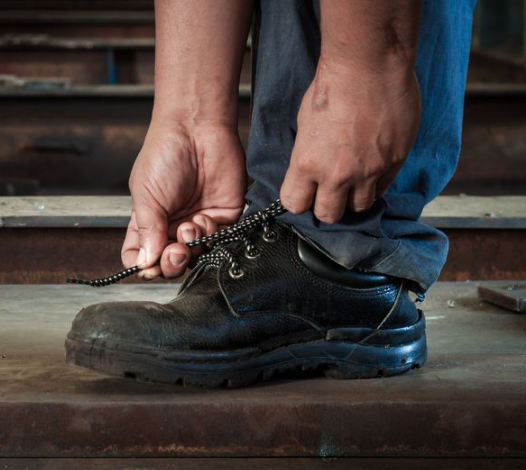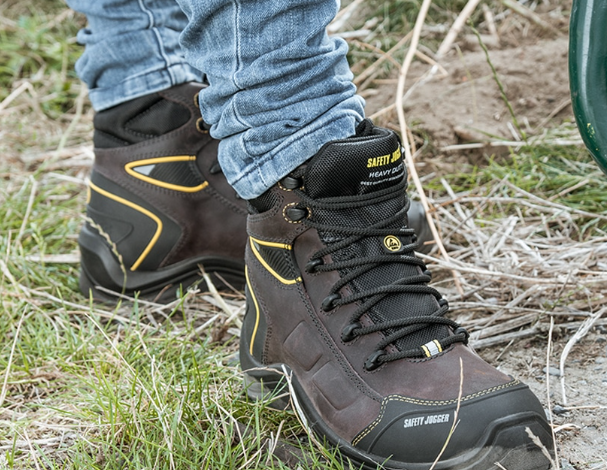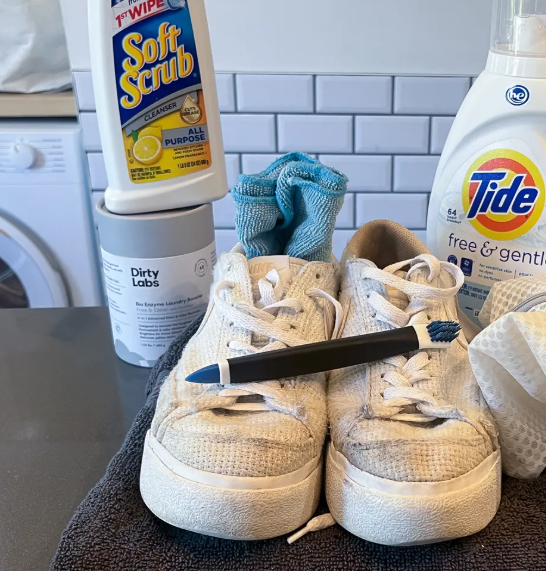
Encouraging Workers to Wear Safety Shoes: Best Practices for a Safer Workplace
In any workplace, personal protective equipment (PPE) is crucial for minimizing the risk of accidents. Among the various types of PPE, safety shoes are especially important as they protect one of the most vulnerable body parts: the feet. Despite their significance, many workers are reluctant to wear safety footwear regularly. Understanding their reasons for resistance and addressing these concerns can help encourage the adoption of this essential safety measure.
In this article, we’ll explore how to raise awareness about the importance of safety shoes and how to encourage their use among employees.
Understanding Why Workers Hesitate to Wear Safety Shoes
While the benefits of safety shoes are clear, some workers still hesitate to wear them. Common reasons for this reluctance include:
- Discomfort: Ill-fitting shoes or rigid materials can cause discomfort, blisters, or even pain.
- Weight: Safety shoes, especially those with heavy reinforcements, can feel cumbersome, leading to fatigue.
- Lack of Breathability: In hot environments, non-breathable shoes can increase sweating, making workdays uncomfortable.
- Aesthetics: The appearance of safety shoes can influence their acceptance, particularly if the design feels outdated.
- Flexibility: Workers who need to move quickly, bend, or squat may find high-cut shoes limiting.
These barriers highlight the need for companies to offer footwear that balances comfort with protection to meet the needs of their workers.
Why Wearing Safety Shoes is Essential
Foot injuries make up nearly 7% of workplace accidents, according to INRS, underscoring the importance of daily use of safety shoes. Here’s why safety footwear is a must:
The Risks of Not Wearing Safety Shoes
Failure to wear proper footwear exposes workers to several serious risks:
- Falling Objects: On construction sites or in industrial settings, heavy or sharp objects may fall unexpectedly, leading to fractures or bruises if the feet are unprotected. Safety shoes with reinforced toe caps provide vital protection against such impacts.
- Puncture Wounds: Walking on sharp debris like nails or glass can lead to deep injuries. Safety shoes with puncture-resistant soles offer an additional layer of defense.
- Slips and Falls: Slippery surfaces, often found in warehouses or factories, increase the risk of accidents. Shoes with anti-slip soles provide better grip and stability, significantly reducing the chance of falls.
The Benefits of Wearing Safety Shoes
Beyond injury prevention, safety shoes contribute to overall employee well-being:
- Reduced Musculoskeletal Disorders (MSDs): Proper footwear provides support to the feet and joints, reducing fatigue and preventing musculoskeletal pain often caused by prolonged standing or repetitive movements.
- Increased Productivity: When workers feel comfortable and protected, they are more focused and productive. Comfortable safety shoes allow workers to perform their tasks more efficiently without discomfort.
Raising Awareness About Safety Footwear
To make the use of safety shoes a standard practice, fostering awareness among employees is key. Here are some effective strategies:
1. Organize Training and Demonstrations
On-site training sessions are an excellent way to educate employees about the importance of wearing safety shoes. These sessions should be interactive and engaging:
- Interactive Presentations: Use visual aids, videos, and real-life examples to illustrate the risks of not wearing safety shoes. This approach makes the message more impactful.
- Practical Demonstrations: Show employees how safety shoes protect against everyday hazards by demonstrating real-world scenarios, such as dropping a heavy object or slipping on an oily surface.
- Testimonials: Invite employees to share personal stories where safety footwear helped prevent an injury. Personal experiences can make the message more relatable.
- Open Discussions: Allow employees to ask questions and voice their concerns, which helps address any uncertainties and reinforces the importance of safety shoes.
2. Integrate Safety Into Company Culture
For awareness to be effective in the long term, it must be part of the company’s culture. Here’s how to do that:
- Ongoing Communication: Use posters, intranet messages, and videos to remind employees about the importance of PPE, especially safety footwear.
- Safety Events: Host safety-themed events like safety weeks, where workshops, demonstrations, and even contests can engage employees and promote the importance of wearing safety shoes.
- Invite Experts: Bring in safety professionals to conduct talks or webinars on workplace safety, further reinforcing the importance of PPE.
- Safety Ambassadors: Appoint employees as safety ambassadors to remind colleagues about best practices and encourage adherence to safety protocols.
3. Improve Comfort and Fit
For employees to adopt safety shoes willingly, they must be comfortable and practical for daily use.
- Choose Comfortable Models: Select footwear made from lightweight, breathable materials. Shoes with cushioned soles and ergonomic designs reduce fatigue and discomfort, especially during long shifts.
- Gather Feedback: Involve workers in choosing the best footwear for their needs by gathering feedback on different models. This increases employee buy-in and ensures that the shoes meet their comfort requirements.
4. Train Employees on Maintenance
Even the best safety shoes need regular care to remain effective. Train employees on how to maintain their shoes by cleaning them, drying them properly, and checking for signs of wear. This helps extend the lifespan of the footwear and ensures they continue to provide optimal protection.
A Shared Responsibility
Safety in the workplace is a collective responsibility. Employers are required to provide proper PPE, including safety shoes, and ensure that employees understand their importance. This responsibility extends to ensuring that the footwear is maintained in good condition and replaced when necessary.
Employees, on the other hand, are responsible for wearing the provided PPE, taking care of it, and following workplace safety regulations. In cases where safety footwear is required by law, failure to wear them can result in disciplinary action.
Conclusion
Raising awareness about the importance of safety shoes is crucial for reducing workplace accidents and improving overall productivity. By addressing the barriers to wearing safety footwear, organizing engaging training sessions, and ensuring the comfort and fit of the shoes, companies can foster a culture of safety that benefits everyone. With proper education and support, safety shoes can become a natural part of the daily routine, keeping workers protected and productive.






